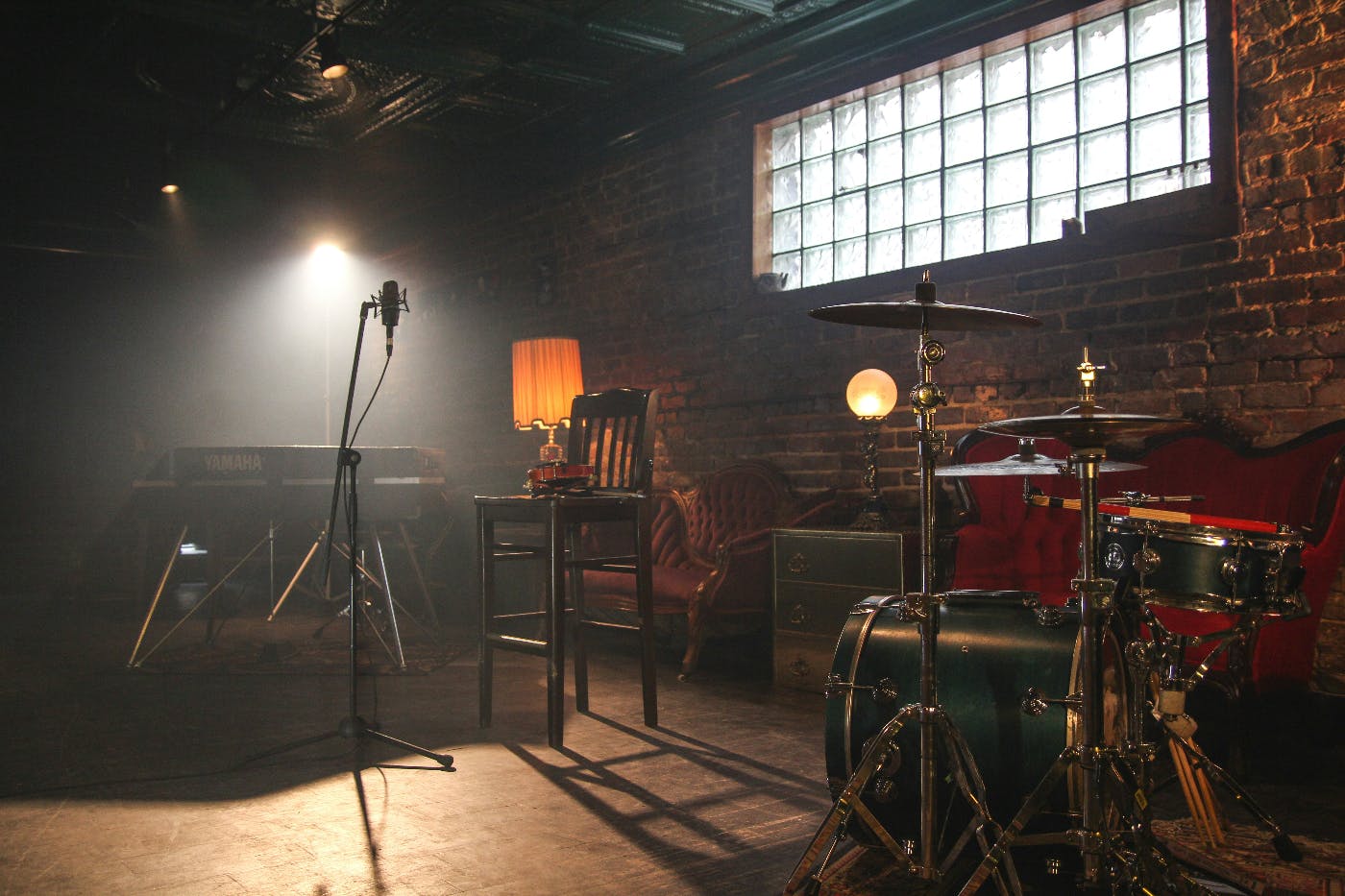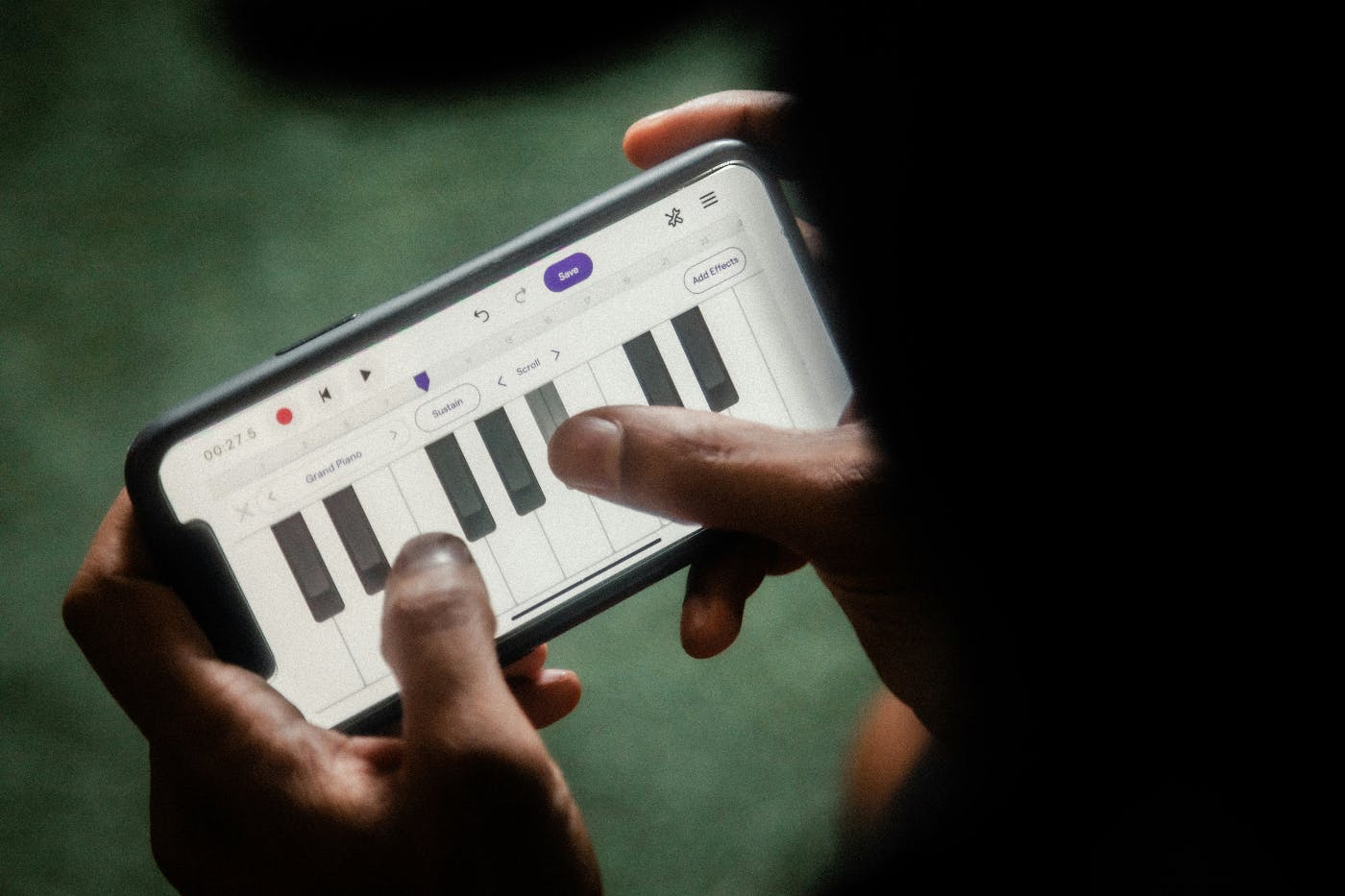
Music, a universal language, transcends cultural and linguistic barriers, uniting people in shared experiences and emotions. This unique power of music has not gone unnoticed in the marketing world.
Over the weekend, I had the chance to sit in a hall with a bunch of musicians while they jammed. One person throwing out the name of a song and then the sweet mystery of watching and hearing these stringed magicians pull music from the air. I love music, I love people who can create music and it pains me greatly that I have absolutely no skills in that area. I cannot play an instrument, despite years of trying, nor can I sing. In fact, I once tried to sing and music got a retraining order out on me. I can never be within 1000 yards of a vocal track.
When the jam ended and we were all sitting down, I asked them questions about their music, their love of it, when they started, and the like. Inevitably, I asked the most cliche question of all: " If you were stranded on a desert island and could have only one song …”
Their answers were wide and varied, and I heard everything from Molly Hatchet’s Flirting with Disaster to Bach’s Tocatta and Fugue in D minor. They asked me, and I demurred, explaining that I was not a musician. That didn’t matter, they said. You like music, don’t you? Of course, I do. I love music, so my opinion counts.
I have often considered this question as I have been fortunate to spend a lot of time with musicians. My answer has changed over the years as I have grown, depending on my insecurity and the crowd I was with. It wasn't cool, in my mind, to tell my high school friends that my song would be Rhapsody in Blue. But as we change and age and absorb more life, this answer does change. My answer has been the same for many years: Elenor Rigby, The Beatles.
It’s not so much the whole song or even the music, though George Martin’s double string quartet is thrilling, for me, the song hangs on my mind due to one lyric:
“Wearing a face that she keeps in a jar by the door.”
That line conjures up so many images for me that I have always wondered how Sir Paul came up with it. It is timeless and stunning.
As I wandered the beach post-jam, I hummed songs and thought about the almost mythical power of music. This set me to thinking about music in marketing and how, if a company is sincere or, as the business demands, authentic, music can create connections to target audiences and solidify a brand across generations. I’d like to teach the world to Coke, or something like that. So, this Monday morning, we will examine music and its power in marketing and branding.
12 Night
"If music be the food of love, play on," Orsino declares in Shakespeare’s Twelfth Night, underscoring the profound influence of music on human emotions. Music, a universal language, transcends cultural and linguistic barriers, uniting people in shared experiences and emotions. This unique power of music has not gone unnoticed in the marketing world. Marketers have long harnessed music's emotional and unifying qualities to create memorable and impactful campaigns. Now, we’ll explore how music can be an effective, non-cynical marketing tool, fostering genuine connections and enhancing brand experiences.
And … five, six, seven, eight

The Emotional Power of Music
Music's ability to evoke emotions is unparalleled. A single melody can bring tears to the eyes, evoke nostalgia, or inspire joy. This emotional resonance is why music is often called the universal language. It speaks to everyone, regardless of age, culture, or language, creating a shared emotional experience.
Scientific studies have shown that music affects the brain's emotional centers, releasing dopamine, a neurotransmitter associated with pleasure and reward. This connection between music and emotion makes it a potent tool for marketers. By tapping into the emotional power of music, brands can create more profound, meaningful connections with their audiences.
Consider the use of music in film. A well-chosen soundtrack can enhance the emotional impact of a scene, making it more memorable and engaging. Don’t believe me, watch JAWS without the soundtrack; the tension the music builds makes the attack so terrifying. Similarly, in marketing, the right music can amplify the emotional appeal of an advertisement, making it more impactful and resonant with the audience.
Music in Marketing: A Historical Perspective
The use of music in marketing is not a new phenomenon. Early radio jingles in the 1920s and 1930s were among the first instances of music being used to promote products. These catchy tunes quickly became embedded in the public consciousness, making brands more memorable.
One of the earliest and most successful examples of this is the "Pepsi-Cola Hits the Spot" jingle from the 1930s. This jingle helped Pepsi-Cola differentiate itself from its competitors and became a significant part of the brand's identity. The success of such jingles demonstrated the power of music in marketing, leading to its widespread adoption in the advertising industry.
Over the decades, the use of music in marketing has evolved. The rise of television in the 1950s and 1960s brought new opportunities for musical advertising, with jingles becoming a staple of TV commercials. In the 1980s and 1990s, brands began experimenting with more sophisticated music uses, incorporating popular songs and working with famous musicians to create unique brand experiences.
Interesting fact: The great Barry Manilow wrote some of our most enduring jingles. Yup, before he was at the Copa, Copacabana, where music and passion were always in fashion, he sang to us that, like a good neighbor, State Farm is there—and told us that at McDonald’s, you deserve a break today. Those little earworms lasted decades.
Today, the digital age has opened up even more possibilities for using music in marketing. Brands can now create custom playlists on streaming platforms, sponsor music festivals and concerts, and use music to enhance the customer experience in stores and online.
Creating Brand Identity Through Music
One of the most effective ways music can be used in marketing is to create and reinforce brand identity. A well-crafted jingle or theme song can become synonymous with a brand, making it instantly recognizable and memorable.
Consider McDonald's iconic "I'm Lovin' It" jingle. Introduced in 2003, this simple yet catchy tune has become a core part of McDonald's brand identity. It conveys a sense of happiness and satisfaction, aligning perfectly with the brand's messaging. The jingle is so recognizable that even without any visuals, most people can identify it as a McDonald's advertisement.
Another example is Intel's five-note sonic logo. This short, distinctive sound has become synonymous with the Intel brand, instantly recognizable to millions of people worldwide. It's a perfect example of how a simple piece of music can create a strong, lasting brand identity.
Sonic branding, the strategic use of sound to reinforce brand identity, is an increasingly important aspect of marketing. In a world where consumers are bombarded with visual information, sound can cut through the noise and create a lasting impression. By carefully choosing music that aligns with their brand values and messaging, marketers can create a more cohesive and memorable brand experience.

Case Studies of Music in Marketing
To understand the impact of music on marketing, let's look at a few successful case studies.
Apple: Apple's use of music in its advertising campaigns is legendary. From the iconic "1984" commercial, which featured a powerful orchestral score, to the more recent "Shot on iPhone" campaign, which uses contemporary music to appeal to a younger audience, Apple has consistently used music to create emotionally resonant ads. One of the most memorable examples is the "Silhouettes" campaign for the iPod, which featured silhouetted dancers grooving to upbeat, energetic songs. This campaign showcased the product and created a sense of fun and excitement around the brand.
Coca-Cola: Coca-Cola's "Share a Coke and a Song" campaign is another excellent example of using music to create a powerful brand experience. The campaign featured popular song lyrics on Coke bottles, encouraging consumers to share a Coke and a song with friends and family. This campaign tapped into people's emotional connection with music, creating a sense of community and shared experience around the brand.
Nike: Nike's "Dream Crazy" campaign, featuring Colin Kaepernick, used a powerful combination of visuals and music to create an emotionally charged advertisement. The stirring, inspirational soundtrack helped convey the message of perseverance and determination, aligning perfectly with Nike's brand values.
These case studies demonstrate how music can enhance the emotional impact of advertising, making it more memorable and engaging.
The Non-Cynical Approach to Music in Marketing
While music in marketing can be incredibly effective, it's essential to approach it authentically. Consumers are increasingly savvy and can easily detect when a brand is using music in a cynical or inauthentic way. Marketers should choose music that genuinely reflects their brand values and messaging to avoid this.
Authenticity is key. When a brand uses music that feels genuine and aligns with its identity, it can create a deeper connection with its audience. This is why many brands are now working with independent musicians and composers to create original music that resonates with their brand.
Building a sense of community through music is another powerful, non-cynical approach. Brands can create branded playlists on streaming platforms, sponsor music festivals and concerts, and even create their own music events. These initiatives help foster a sense of belonging and shared experience among consumers, enhancing their connection to the brand.
For example, Red Bull's sponsorship of music festivals and events has helped it build a strong association with the music and youth culture, reinforcing its dynamic and energetic brand identity.
Enhancing Customer Experience
Music can also play a crucial role in enhancing the customer experience. In retail environments, the right music can create a more pleasant and enjoyable shopping experience, encouraging customers to spend more time in-store. Studies have shown that music can influence consumer behavior, affecting everything from the pace at which they shop to the amount of money they spend.
Music can enhance the user experience by creating a more engaging and immersive atmosphere in online environments. Brands can use background music in their websites, apps, and social media content to create a consistent and enjoyable customer experience.
Summing Up
With its unparalleled ability to evoke emotions and create a sense of unity, music is a powerful marketing tool. When used thoughtfully and authentically, it can enhance brand identity, create memorable advertising campaigns, and foster a sense of community among consumers. By tapping into the emotional power of music, marketers can create more meaningful and impactful brand experiences.
As we look to the future, it's clear that music will continue to play a crucial role in marketing. Brands that understand and harness the power of music will be better positioned to connect with their audiences and create lasting impressions. So, if music be the food of marketing, play on.

